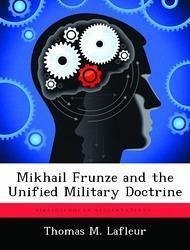From 1925 to 1991, the Soviet Red Army attempted to epitomize the union of military and political thought. One may wonder just how the Red Army came to be formed in this manner. This thesis attempts to answer that question by addressing the debate over a Unified Military Doctrine beginning in 1921, through the lens of providing a critical analysis of the military and political experiences of its staunchest supporter: Mikhail Frunze. In this paper, it will be argued that, despite the vast military experiences of Mikhail Frunze, his political experiences were more influential in creating the framework from which he crafted his version of a Unified Military Doctrine. These political experiences were shaped by the writings of Friedrich Engels and Karl Marx, whose ideology formed the nucleus of the Bolshevik Party. Through his foresight and persistence, Frunze was able to implement his version of the UMD, thus transforming the Red Army and setting the conditions for the subordination of all elements of power to the State.
Hinweis: Dieser Artikel kann nur an eine deutsche Lieferadresse ausgeliefert werden.
Hinweis: Dieser Artikel kann nur an eine deutsche Lieferadresse ausgeliefert werden.








